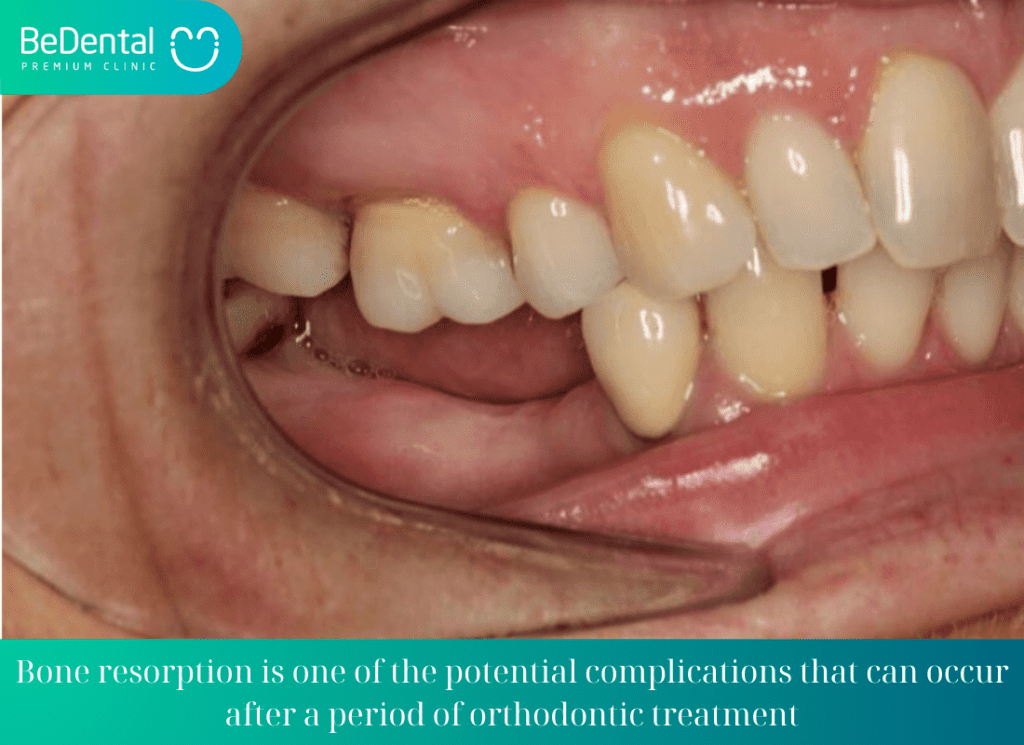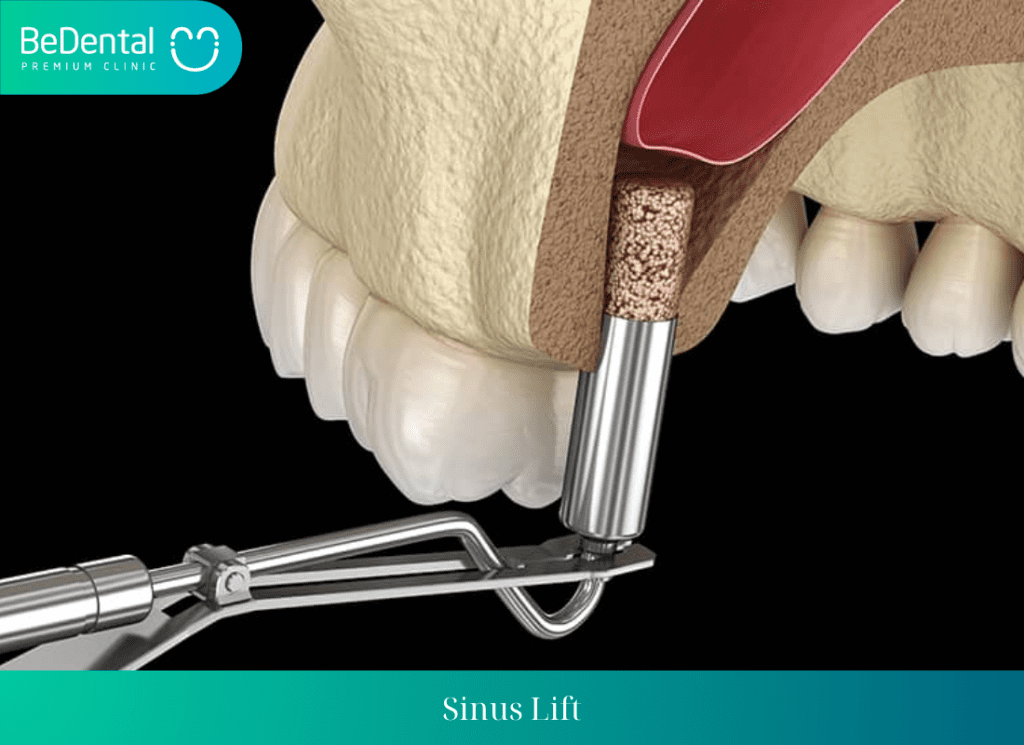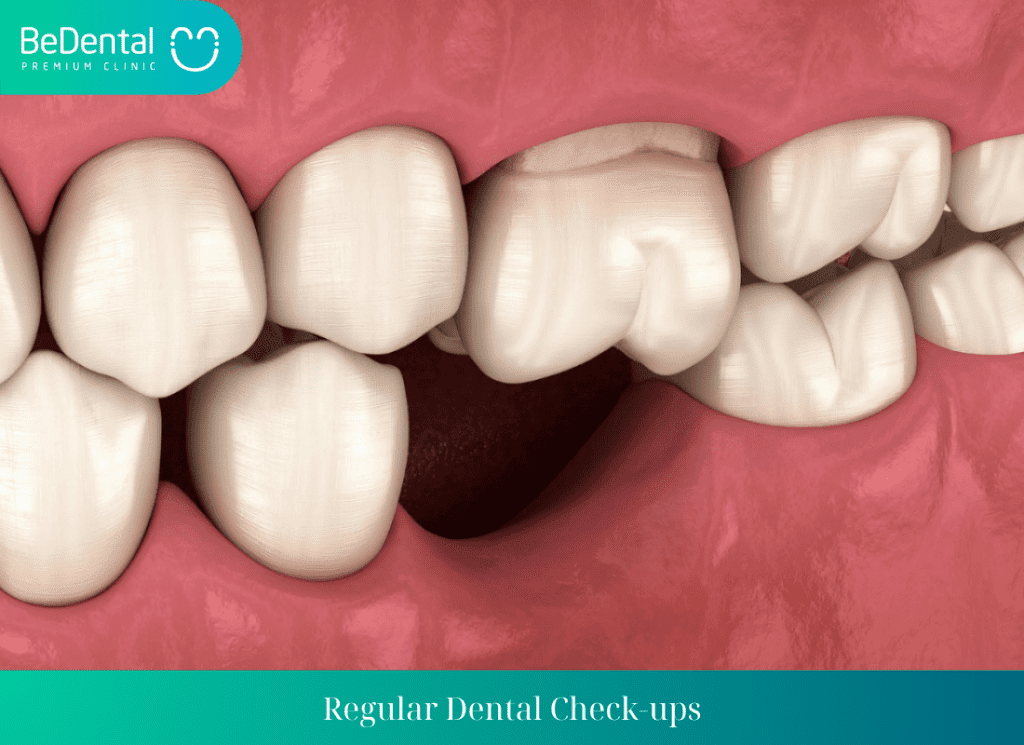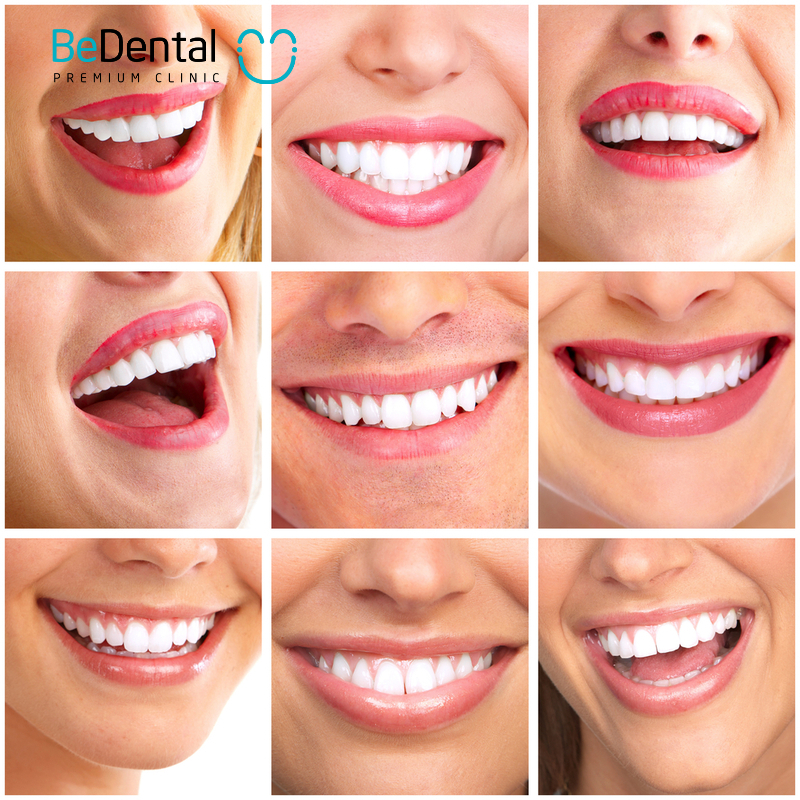Tooth root resorption during orthodontic treatment is an undesirable condition that no one wants to experience. However, in some cases, bone loss still occurs due to various reasons. Bone resorption when wearing braces not only affects oral health but also leads to changes in appearance, causing facial deformation, sunken cheeks, and a loss of confidence in communication.
Causes of bone resorption when wearing braces
Bone resorption is one of the potential complications that can occur after a period of orthodontic treatment. This condition not only impacts oral health but also results in changes in appearance, diminishing the patient’s quality of life. Below are the main causes leading to bone resorption during orthodontic treatment:
- Force Impact on Tooth Bone: The tooth bone is composed of biological mineral salts, which can easily be reduced in height, density, and volume when subjected to external forces. The orthodontic process requires the application of force on the teeth and jawbone to move the teeth into the desired position.
See more: Things to know when wearing braces
However, if this force is not adjusted appropriately, it can cause excessive pressure on the tooth bone, leading to bone resorption. This can occur vertically or horizontally, depending on the individual’s condition and how the orthodontic force is applied.
- Nutritional and Calcium Deficiency: A diet lacking in nutrition, especially calcium, can weaken the bone structure. Calcium is a crucial component in maintaining bone strength. When the body is not supplied with enough calcium, the tooth bone gradually loses its strength and becomes more susceptible to resorption under the pressure of orthodontic force.
In the first year of the orthodontic process, part of the jawbone may be resorbed, leading to signs such as sunken cheeks and deep gum recession. These changes not only affect aesthetics but also make chewing and daily communication difficult


Consequences of Tooth Root Bone Loss During Orthodontic Treatment
Gum Recession
One of the serious consequences of bone resorption when wearing braces is gum recession. When the jawbone is destroyed, its ability to support the gum tissue is significantly reduced. This leads to the gum tissue no longer being able to tightly cover the tooth roots as before.
Direct Impact on the Gums
The deterioration of the jawbone causes the gums to recede. As a result, the gum line becomes thinner, exposing more of the tooth roots, making them more visible than in their normal state. This not only affects aesthetics but can also cause discomfort when smiling or speaking.
See more: What Is the Appropriate Age for Braces?

Causes of Loss of Confidence
Gum recession is not just an aesthetic issue but can also lead to a loss of confidence for the patient. The noticeable difference in appearance may cause them to feel self-conscious when interacting with others and uncomfortable in social situations.
Challenges in Dental Care
Moreover, gum recession can also increase difficulties in dental care. A receding gumline can make it easier for plaque and bacteria to accumulate, leading to oral health problems such as gingivitis and periodontitis.
Decline in Periodontal Function
In addition to gum recession, bone resorption can also lead to a decline in periodontal function. When jawbone is lost, the periodontal structure is no longer strong enough to support the teeth. This can result in issues such as loose teeth, misalignment, and even tooth loss in more severe cases.
See more: What is Orthodontic archwire
Reduced Support from the Jawbone
Jawbone deterioration reduces its ability to support both the periodontal structure and gum tissue. Without enough strength to hold the teeth firmly during orthodontic treatment, there is a higher risk of complications related to periodontal function.
Decrease in Chewing Function
Bone resorption when wearing braces reduces the biting strength of the teeth, leading to a significant decrease in chewing ability. This can cause difficulties in grinding food and absorbing nutrients from food. This decline may also increase the risk of digestive-related issues, such as stomach and digestion problems.

Methods to Address Bone Resorption When Wearing Braces
When bone resorption when wearing braces, corrective measures require specialized intervention and the application of appropriate methods under the guidance of a specialist. Here are some commonly used approaches to address this issue:
Jawbone Grafting
Jawbone grafting is one of the primary solutions to restore the area where bone loss has occurred. The doctor may use synthetic bone or harvest bone from other parts of the body to graft into the area needing treatment. This process requires time for the bone to regenerate and heal, providing the maximum chance for recovery and preservation of the bone.
Sinus Lift
A sinus lift is a complex procedure aimed at restoring the height of the jawbone when it has diminished due to bone resorption. This process can be carried out through a closed (sinus lift) or open sinus lift, depending on the extent of the damage and the treatment strategy determined by the doctor. This method can be combined with bone grafting to enhance recovery effectiveness and ensure the durability of the jawbone.
See more: Signs of gum recession during braces
Personalized Evaluation and Treatment
Addressing bone resorption when wearing braces requires the doctor to evaluate each case specifically to devise the most appropriate treatment plan. In addition to traditional methods such as bone grafting and sinus lifts, advanced techniques such as bioplasty or the use of compatible materials may be employed to ensure optimal results.

How to Prevent Bone Resorption When Wearing Braces
When deciding to undergo orthodontic treatment, effective preventive measures are crucial to ensure a smooth process and optimal results. Here are some ways you can prevent tooth root bone loss during orthodontic treatment:
Choose a Reputable Dental Clinic
Selecting a reputable dental clinic is the first important step and greatly influences the final outcome of the orthodontic process. Clinics with experienced dentists and modern equipment will ensure that your orthodontic treatment follows the correct procedures, thereby minimizing unwanted risks.
See more: What is Abutment?
Thoroughly Treat Oral Diseases
Before starting orthodontic treatment, it is essential to thoroughly treat any oral diseases to prevent bone resorption and other complications. Periodontitis and other gum issues can weaken the jawbone and affect the orthodontic process. Therefore, make sure to treat these conditions at reputable dental clinics to properly prepare for your orthodontic treatment.
Regular Dental Check-ups
Regular dental check-ups are an essential part of oral health care, especially during orthodontic treatment. Annual check-ups or those recommended by your dentist help in early detection and timely treatment of issues, from plaque removal to addressing cavities. This helps maintain a healthy smile and prevent serious problems in the future.

Supplementing Essential Nutrients for the Body
During orthodontic treatment, proper nutrition is vital to support the regeneration and maintenance of jawbone health. Calcium is an essential element for building up the jawbone and developing teeth. You can supplement calcium through foods like milk, yogurt, seeds, and green vegetables to help the jawbone recover quickly and effectively.
Proper Oral Hygiene
Maintaining proper oral hygiene is a crucial part of daily oral care, especially during the orthodontic phase. To keep your mouth clean and healthy, you can follow these steps:
- Brush your teeth correctly: Use a soft or ultra-soft toothbrush and fluoride toothpaste. Move the brush at a 45-degree angle to the gums and brush gently to avoid damaging the enamel. Brush at least twice a day and after every meal.
- Use dental floss: Floss daily to remove plaque and food particles between teeth.
- Use mouthwash: Rinse with fluoride mouthwash to kill bacteria and prevent cavities.
The above article has helped you answer the question: “How to prevent bone resorption when wearing braces?”. Contact Bedental if you want advice on appropriate methods to have more precious information, we will provide free help 24/7.
Tư vấn chuyên môn bài viết:
BÁC SĨ DƯƠNG THỊ THÙY NGA





